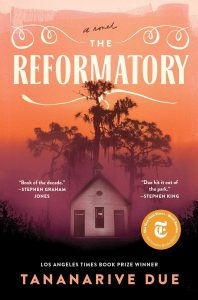I tried to make it to the end of this mash-up novel of ghosts and racists and the mid-century-America Black folks they haunt, but I didn’t. A couple of hundred pages short of the finish I realized I held in my hands an excellent three-hundred-page book that, unfortunately, sprawled across more than five hundred pages.

And that’s a shame.
The story of “The Reformatory” is based in part on the experience of the author’s great uncle, who was remanded to the infamous Dozier School for Boys in Marianna, Florida, the violent institution that was also the setting of Colson Whitehead’s novel “The Nickel Boys,” a powerful book that won the 2020 Pulitzer Prize for Fiction.
The two works differ in many ways (the ghosts, for example), but mainly in scope: Colson weaves a taut story, Due spins an overly complex web.
To be sure, my opinion is not widely held. On Goodreads, “The Reformatory” averages four-and-a-half stars. I gave it two, and here’s why:
During my first weeks as a newspaper reporter I scribbled what I thought was a first-rate piece of American journalism. After turning it into the desk, the crusty city editor shoved the pages back to me after scanning a few hundred words. What’s the problem with it? I asked, expecting some specific criticism about sources or emphasis. She withered me with a look rooted in years of suffering idiots, and said simply, “Too many words.”
